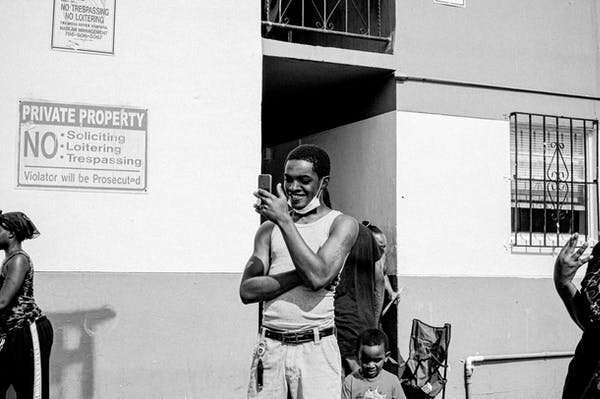Data linking race and health predicts new COVID-19 hotspots

Anecdotal stories about the COVID-19 pandemic suggest that Black, racialized and immigrant people in Canada have been disproportionately affected by COVID-19. This narrative tells the story of immigrants and racialized people pushed to the front lines of the economy, working in settings with greater exposure to the COVID-19 virus.
It tells the story of immigrant groups clustered in city neighborhoods with high population densities who cannot practice physical distancing. It tells the story of temporary migrants who live in tightly packed communal quarters.
Reports have shown that Black and immigrant communities in the U.S. have been disproportionately affected by COVID-19. But many believe that Canada is different.
After all, Canada has universal health insurance coverage; the U.S. does not. Canada adopted a multiculturalism policy decades ago and racial discrimination is frequently—though wrongly—believed to be absent in Canada.
Under this narrative, many government officials in Canada have not seen a need to collect COVID-19 data on race. They have also excluded racial minorities and immigrants from their list of populations vulnerable to COVID-19.
Which of the two narratives reflect the realities of racial minorities and immigrants in Canada during the COVID-19 pandemic?
Until recently, there was no data to address this question. By making creative use of health and census data, we now know that Black and immigrant communities in Canada are disproportionately affected by COVID-19.
Combining COVID-19 and census data
Our research team based at the department of sociology at Western University tested these competing narratives by creatively combining existing data. We used COVID-19 data released by the Public Health Agency of Canada and census data about the racial and socioeconomic composition of health regions, units set up by provinces in Canada to administer health care.
Using these data, we assessed how racial and socioeconomic factors have shaped COVID-19 infection and death rates. Our findings paint a picture closer to the anecdotal stories.
The COVID-19 pandemic is not the “great equalizer.” Black and immigrant communities in Canada are disproportionately affected by COVID-19.
Our findings showed COVID-19 infection rates are significantly higher in health regions with a higher percentage of Black residents. A one percentage point increase in the share of Black residents in a health region is associated with the doubling of coronavirus infection rates. We also found that a one percentage point increase in the share of foreign-born residents is associated with a three-per-cent rise in COVID-19 infection rates.
This may explain why Montréal, where Black residents make up 6.8 percent of the population, has emerged as one of Canada’s COVID-19 epicenters. The same is also true of other cities with high immigrant and Black populations, like Toronto and Vancouver.
We also found the number of COVID-19 deaths tend to be higher in communities with higher shares of residents who are 65 and older. Many studies have shown COVID-19 is more lethal in older adults and we have seen the tragically high COVID-19 death rates in long-term care facilities.
COVID-19 hotspots
Health regions are large administrative units responsible for the health care of roughly 420,000 residents. They are too large geographically and too socially heterogeneous to adequately tell a story about local communities. So for our study, we subdivided health regions into smaller areas and predicted the spread of COVID-19 in local communities based on their racial, demographic and economic profile. This approach helped us identify several potential COVID-19 hot spots.
Black and immigrant communities like Hamilton, Vancouver and Montréal were particularly vulnerable. Also, other localized communities may be more vulnerable than originally thought.
For example, the oilsands in northeast Alberta, where the petroleum industry hired large numbers of temporary migrant workers who reside in crowded living quarters, may be a potential COVID-19 hotspot. Similarly, another potential COVID-19 hotspot may be found in western Québec, which includes mining sites that employ large numbers of temporary migrant workers.
Public health workers may have overlooked the higher infection rates in Ontario’s towns bordering Michigan, partly reflecting their geographic proximity to U.S. cities like Detroit.
Who is the most vulnerable?
Communities are home to different types of people. With the existing data, we cannot address questions like: are white residents who live in Black communities less vulnerable to COVID-19 than their Black neighbors?
Our study highlights the importance of collecting individual data about COVID-19 patients as well as for smaller geographic units. Having individual data is essential for determining how to direct scarce resources and how to contain the spread of the virus.
With our study, we underscore the importance of acknowledging the challenges of Black and immigrant communities in Canada, including their vulnerability to COVID-19. Without this acknowledgment, we risk exacerbating inequality between them and other groups.
For example, Blacks and immigrant groups were not classified as “vulnerable populations” in the Ontario government’s COVID-19 Action Plan for Vulnerable People. They were excluded even though their risks of infection and death are significantly higher than those of some groups identified as vulnerable under this plan.
Policies aimed at mitigating the consequences of COVID-19 target individuals as well as communities. If we do not address this oversight, the future health disadvantages of Black and immigrants groups may become more pronounced.
Source: Read Full Article

